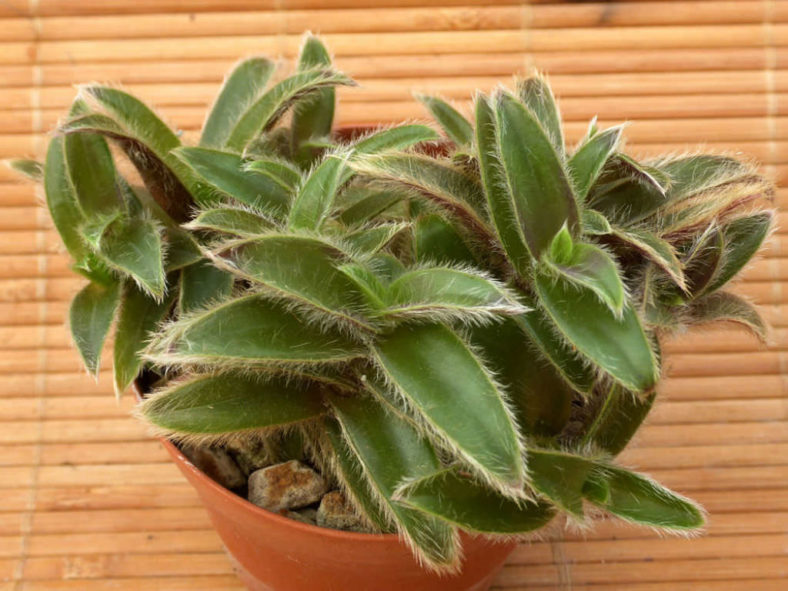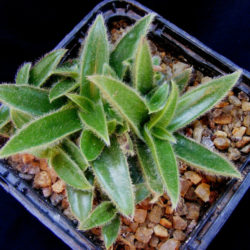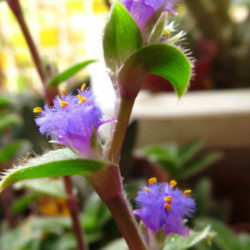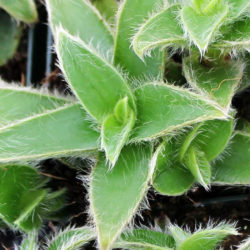Scientific Name
Cyanotis somaliensis C.B.Clarke
Common Name(s)
Furry Kittens, Kitten Ears, Pussy Ears
Synonym(s)
Tradescantia somaliensis
Scientific Classification
Family: Commelinaceae
Subfamily: Commelinoideae
Tribe: Tradescantieae
Genus: Cyanotis
Description
Cyanotis somaliensis is a trailing plant with long, fleshy stems almost hidden by lance-shaped, olive-green leaves with long white hairs. It grows up to 4.8 inches (12 cm) tall. The leaves can reach 6 inches (15 cm) in length and 0.6 inches (1.5 cm) in width.
The small flowers are pale violet with prominent golden stamens and appear in clusters in summer.
Origin
Cyanotis somaliensis is endemic to northern Somalia.

Hardiness
USDA hardiness zone 10a to 11b: from 30 °F (−1.1 °C) to 50 °F (+10 °C).
How to Grow and Care
A relatively small plant, ideal on its own or in terrariums or indoor fairy gardens. Because it has a creeping or trailing habit, this plant is excellent for hanging planters or tall containers. You can also grow it in a low shallow pot and let it grow horizontally on a tabletop, mantle, desk, or other surfaces to great effect.
Grow Pussy Ears in a bright spot for the happiest plant. It likes high light but tolerates medium light. When Pussy Ears doesn't get enough light, it can get leggy, with long stems between the leaves.
If your plant grows too large or becomes too leggy, you can prune Pussy Ears without hurting it. Cut it back at any time of year. By cutting it back, you'll encourage Pussy Ears to become a fuller or bushier plant.
Water Pussy Ears when the top inch (2.5 cm) or so of the potting mix is dry. Take care not to let the potting mix stay wet or soggy for extended periods. If the roots stay too wet, this plant can rot.
If you wish to fertilize your Pussy Ears plant, you can do so in spring and summer. Let the plant rest during the cooler, darker fall and winter months. You can use any general-purpose houseplant fertilizer. Just be sure to follow the directions on the product packaging. Brands formulate their fertilizers differently, so application rates and frequencies vary.
Links
- Back to genus Cyanotis
- Succupedia: Browse succulents by Scientific Name, Common Name, Genus, Family, USDA Hardiness Zone, Origin, or cacti by Genus
Photo Gallery
Click on a photo to see a larger version.


